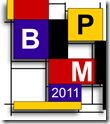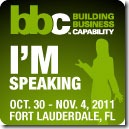I just found my notes from a Salesforce.com lunch event that I went to in Toronto back in April, where Peter Coffee spoke enthusiastically while we ate three lovingly-prepared courses at Bymark, and was going to just pitch them out but found that there was actually quite a bit of good material in there. Not sure how I managed to write so much while still eating everything in front of me.
This came just a few days after the SF.com acquisition of Radian6, a move that increased the Canadian staff to 600. SF has about 1,500 customers in Canada, a few of whom where in the room that day. Their big push with these and all their customers is on strategic IT in the cloud, rather than just cost savings. One of the ways that they’re doing this is by incorporating process throughout the platform, allowing it to become a global user portal rather than just a collection of silos of information.
Coffee discussed a range of cloud platform types:
- Infrastructure as a service (IAAS) provides virtualization, but persists the old IT and application development models, combining the weaknesses of all of them. Although you’ve outsourced your hardware, you’re still stuck maintaining and upgrading operating systems and applications.
- Basic cloud application development, such as Google apps and their add-ons.
- SF.com, which provides a full application development environment including UI and application support.
The old model of customization, that most of us are familiar with in the IT world, has led to about 1/3 of all enterprise software running on the current version, and the rest stuck with a previous version, unable to do the upgrade because the customization has locked it in to a specific version. This is the primary reason that I am so anti-customization: you get stuck on that old version, and the cost of upgrading is not just the cost of upgrading the base software, but of regression testing (and, in the worst case, redeveloping) all the customization that was done on top of the old version. Any wonder that software maintenance ends up costing 10x the original purchase cost?
The SF.com model, however, is an untouchable core code base sitting on managed infrastructure (in fact, 23 physical instances with about 2,000 Dell servers), and the customization layer is just an abstraction of the database, business logic and UI so that it is actually metadata but appears to be a physical database and code. In other words, when you develop custom apps on the SF.com platform, you’re really just creating metadata that is fairly loosely coupled with the underlying platform, and resistant to changes therein. When security or any other function on the core SF.com platform is upgraded, it happens for all customers; virtualization or infrastructure-as-a-service doesn’t have that, but requires independent upgrades for each instance.
Creating an SF.com app doesn’t restrict you to just your app or that platform, however: although SF.com is partitioned by customer, it allows linkages between partners through remapping of business objects, leveraging data and app sharing. Furthermore, you can integrate with other cloud platforms such as Google, Amazon or Facebook, and with on-premise systems using Cast Iron, Boomi and Informatica. A shared infrastructure, however, doesn’t compromise security: the ownership metadata is stored directly with the application data to ensure that direct database access by an administrator doesn’t allow complete access to the data: it’s these layers of abstraction that help make the shared infrastructure secure. Coffee did punt on a question from the (mostly Canadian financial services) audience about having Canadian financial data in the US: he suggested that it could be encrypted, possibly using an add-on such as CipherCloud. They currently have four US data centers and one in Singapore, with plans for Japan and the EU; as long as customers can select the data center country location that they wish (such as on Amazon), that will solve a lot of the problem, since the EU privacy laws are much closer to those in Canada. However, recent seizures of US-owned offshore servers brings that strategy into question, and he made some comments about fail-overs between sites that makes me think that they are not necessarily segregating data by the country specified by the customer, but rather picking the one that optimizes performance. There are other options, such as putting the data on a location-specific Amazon instance, and using SF.com for just the process parts, although that’s obviously going to be a bit more work.
Although he was focused on using SF.com for enterprises, there are stories of their platform being used for consumer-facing applications, such as Groupon using the Force.com application development platform to power the entire deals cycle on their website. There’s a lot to be said for using an application development environment like this: in addition to availability and auto-upgrading, there’s also built-in support for multiples mobile devices without changing the application, using iTunes for provisioning, and adding Chatter for collaboration to any application. Add the new Radian6 capabilities to monitor social media and drive processes based on social media interactions and mentions, and you have a pretty large baseline functionality out of the box, before you even start writing code. There are native ERP system and desktop application connectors, and a large partner network offering add-ins and entire application suites.
I haven’t spent any time doing evaluation specifically of Salesforce or the Force.com application development platform (except for a briefing that I had over a year ago on their Visual Process Manager), but I’m a big fan of building applications in the cloud for many of the reasons that Coffee discussed. Yes, we still need to work out the data privacy issues; mostly due to the potential for US government intervention, not hackers. More importantly, we need to get over the notion that everything that we do within enterprises has to reside on our own servers, and be built from the metal up with fully customized code, because that way madness lies.
 BPM 2011, the 9th annual academic research conference on BPM in Clermont-Ferrand. where I will be keynoting the industry track. I have attended this conference for the past few years and am hugely honored to be asked to keynote. I love this conference because it gives me a peek into the academic research going on in BPM – although I barely remember what an eigenvector is, I can always see some good ideas emerging here that will undoubtedly become some software vendor’s killer feature in a few years. This conference was in the US last year for the first time (it is usually in Europe, where a great deal of the research goes on) and I encouraged a lot of US BPM vendors to attend; hopefully, they will have seen the value in the conference and will get themselves on an international flight this time.
BPM 2011, the 9th annual academic research conference on BPM in Clermont-Ferrand. where I will be keynoting the industry track. I have attended this conference for the past few years and am hugely honored to be asked to keynote. I love this conference because it gives me a peek into the academic research going on in BPM – although I barely remember what an eigenvector is, I can always see some good ideas emerging here that will undoubtedly become some software vendor’s killer feature in a few years. This conference was in the US last year for the first time (it is usually in Europe, where a great deal of the research goes on) and I encouraged a lot of US BPM vendors to attend; hopefully, they will have seen the value in the conference and will get themselves on an international flight this time.![]() Progress Software’s Revolution user conference in Boston, where I will be delivering an Introduction to BPM workshop. As Progress continues to integrate the Savvion acquisition, they are dedicated to educating their user community and channel partners on BPM, and this workshop forms part of those efforts.
Progress Software’s Revolution user conference in Boston, where I will be delivering an Introduction to BPM workshop. As Progress continues to integrate the Savvion acquisition, they are dedicated to educating their user community and channel partners on BPM, and this workshop forms part of those efforts. Building Business Capability (formerly Business Rules Forum and Business Process Forum) in Fort Lauderdale, where I am reprising an updated version of my Aligning BPM and Enterprise Architecture tutorial that I gave at the IRM BPM conference in London in June. I’m also sitting on and/or moderating three panels: one on the Process Knowledge Initiative, one on Business Architecture versus Technical Architecture, and a BPM vendor panel.
Building Business Capability (formerly Business Rules Forum and Business Process Forum) in Fort Lauderdale, where I am reprising an updated version of my Aligning BPM and Enterprise Architecture tutorial that I gave at the IRM BPM conference in London in June. I’m also sitting on and/or moderating three panels: one on the Process Knowledge Initiative, one on Business Architecture versus Technical Architecture, and a BPM vendor panel.
